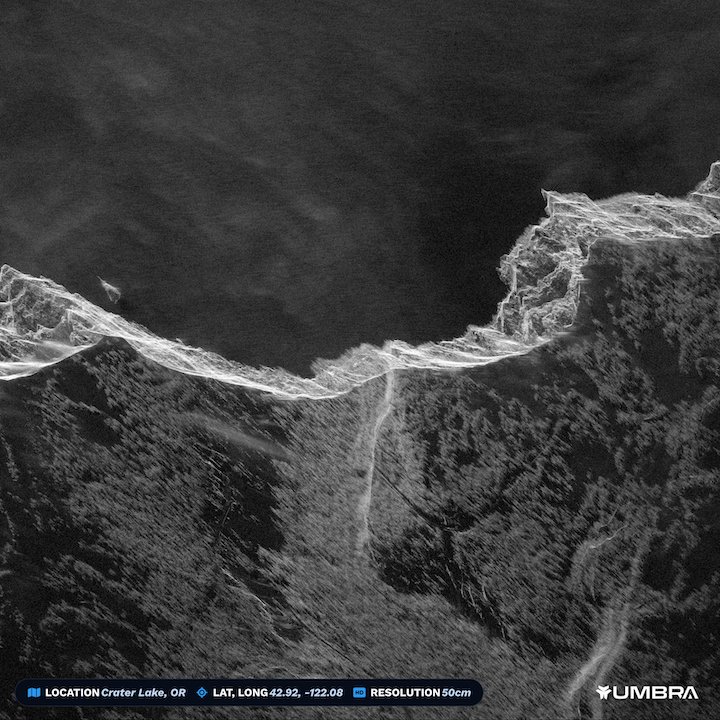
An Umbra SAR image of Crater Lake, Oregon. Photo: Umbra
Northrop Grumman and Umbra have been awarded small contracts by the Defense Advanced Research Projects Agency (DARPA) to continue to the second phase of a program designed to collect data from radar-equipped satellites flying in formation and develop innovative algorithms to process the data for military applications.
Umbra’s contract under the Distributed Radar Image Foundation Technology (DRIFT) program is for $6 million and will last for six months and Northrop Grumman’s is for $2 million and covers one year, a DARPA spokesperson said.
Umbra currently has eight synthetic aperture radar (SAR) sensing satellites on orbit. Last November, the company’s first tandem pair of satellites were launched aboard the SpaceX Transporter-9 mission. Umbra plans to deploy 32 satellites in what it says will be “strategically designed pairs.”
During Phase II, Umbra’s satellites will generate bistatic and multistatic datasets for DARPA and Northrop Grumman to use in the development of processing algorithms.
Collecting data from more than one satellite increases the range of radar returns, which in turn can improve object detection and insights, expanding the utility of SAR satellites. Umbra said that at the end of Phase II it will “conduct an on-orbit demonstration showcasing the multistatic capabilities it has developed.”
DARPA’s fiscal year 2025 budget documents say that plans in FY ’24 include on-orbit data collection in formation flying and joint radar operations, test and validation of algorithms using the satellite data, and “begin to optimize algorithms and software to run on tactically relevant timescales.”
In FY ’25, DARPA will continue to optimize the algorithms and “demonstrate tactical use cases scenarios for DoD applications,” the document says. DARPA also says that technology developed under DRIFT will transition to the military services. The agency is requesting $7 million for the program in FY ’25.
This story was first published by Defense Daily
The post DARPA Selects Northrop Grumman, Umbra for Phase II of DRIFT Program appeared first on Via Satellite.